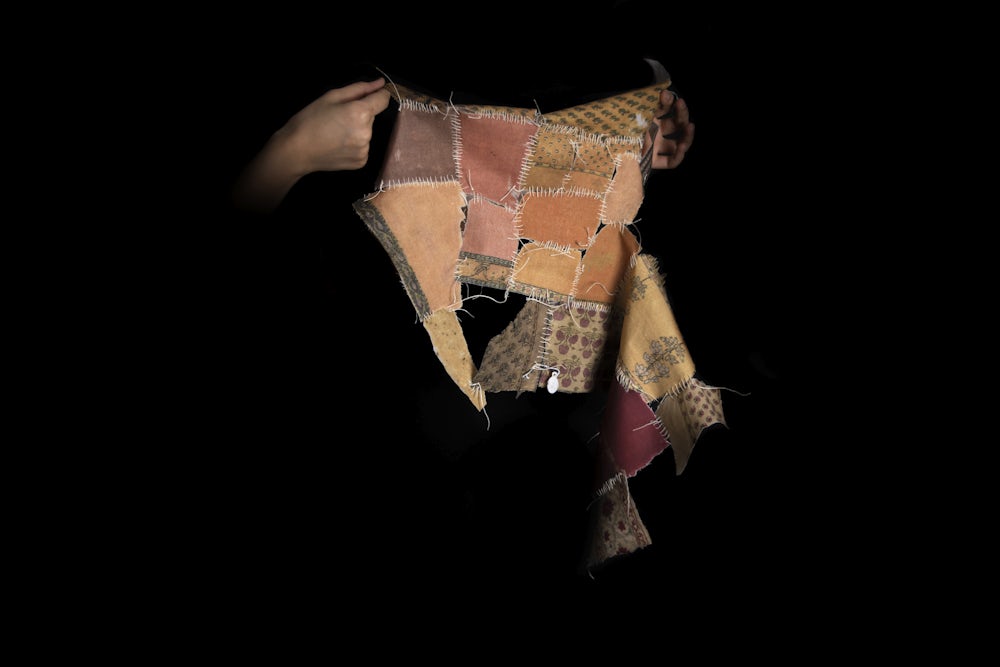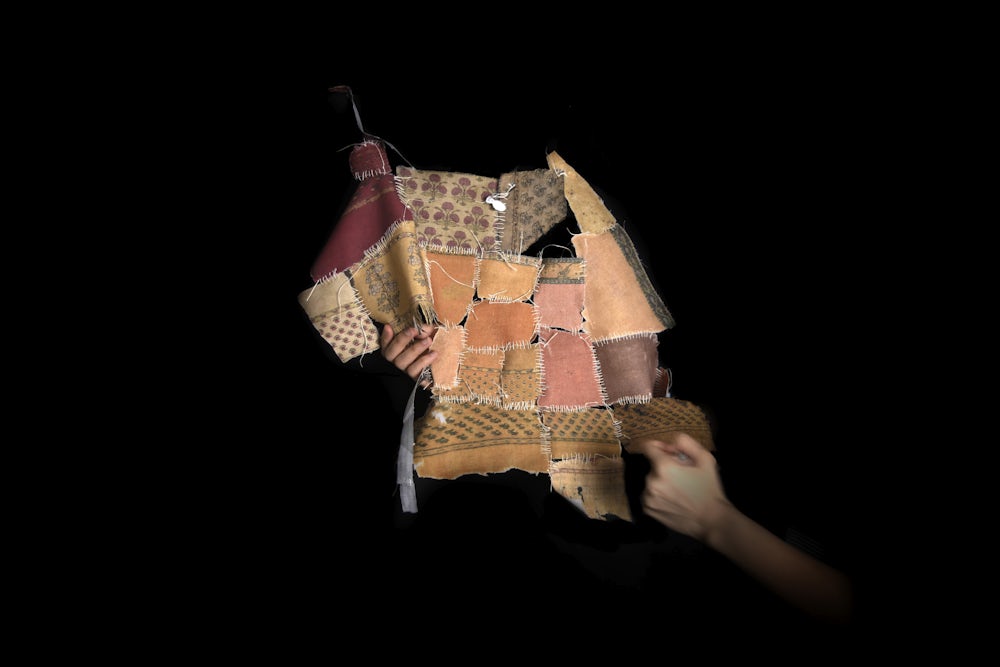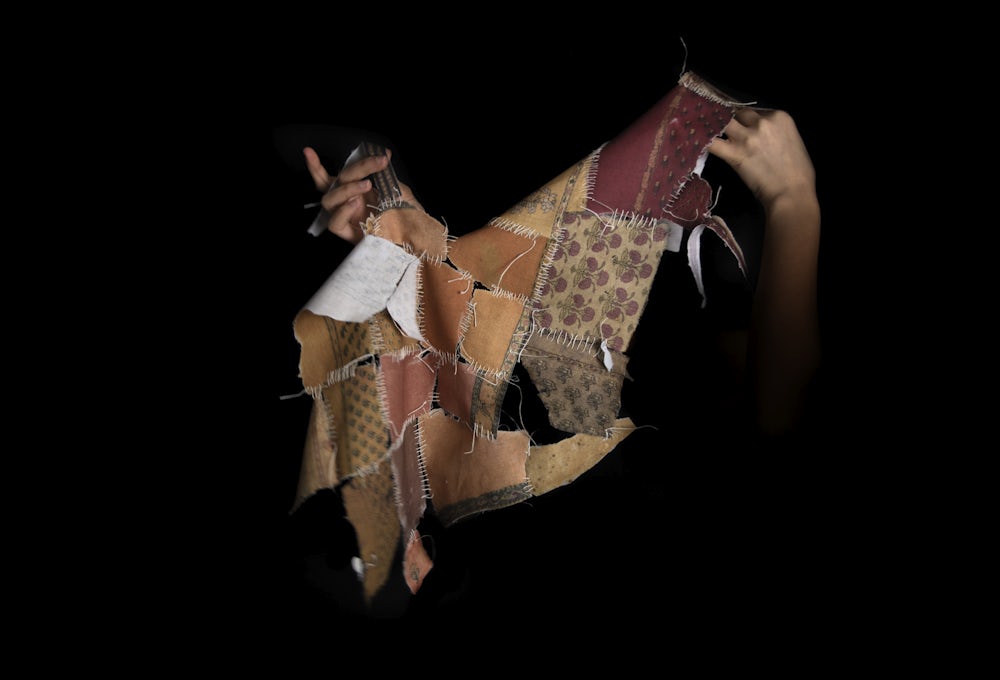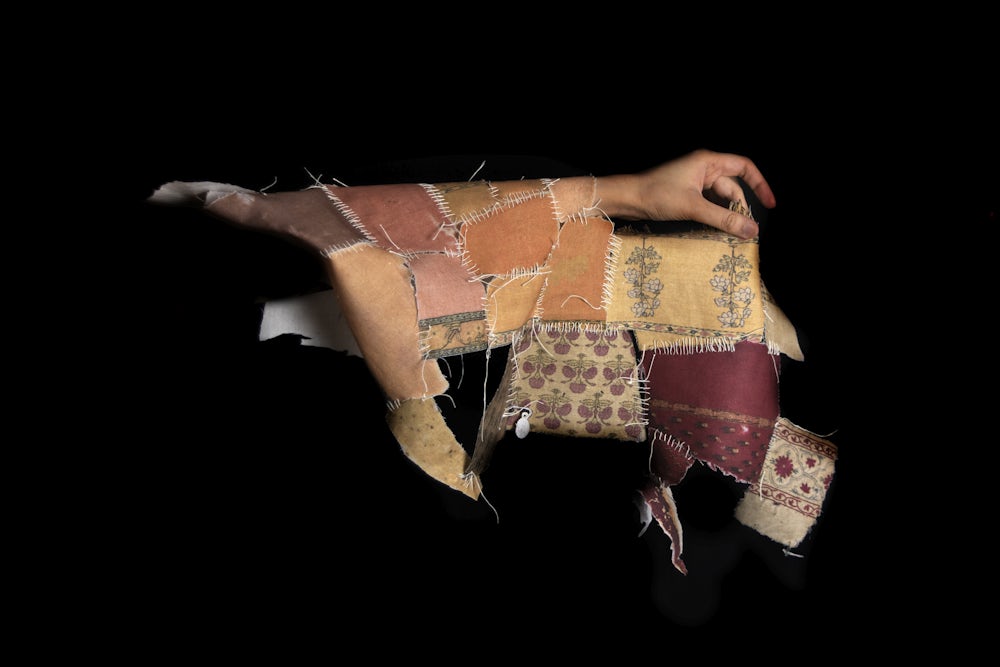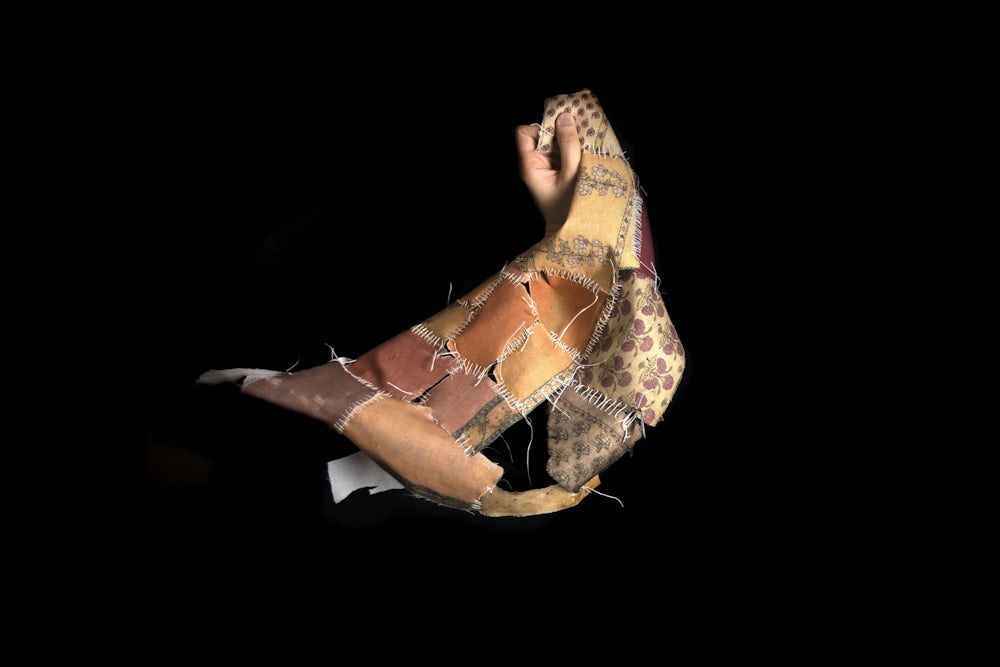Maya Patel
"tear&wear"
Keywords: archival practice, decolonising knowledge, moving image, photography, objects
Processes of compilation are embedded in processes of dismemberment.
Following Tipu Sultan’s defeat in 1799, his treasury was looted and dispersed as trophies. ‘Tippoo’s Tiger’ was one of these trophies. Implicated by shifting narratives, “Tippoo’s Tiger” has come to be a dismembered limb of a vast body of tools of antagonism. Today, ‘Tippoo’s Tiger’ is “one of the V&A’s most famous and intriguing objects”1. It is a musical instrument which performs the mauling of a British soldier by a tiger. The soldier wails whilst the tiger roars. Tipu Sultan, the Tiger of Mysore, wore the tiger in combat, embodying its power and aggression. The tiger was an important motif, adorning the weaponry and clothing of Tipu’s army as well as his palace walls and personal belongings. On one hand, the tiger is a malevolent creature of destruction whilst on another, a creature of resistance.
Both the tiger and the colonial museum are instruments of dismemberment. It is this quality that perpetuates their antagonistic relationship. Revealed through compiling a dislocated treasury, this work comments upon the colonial archive’s potential to tear, darn and patch. Piecing together Tipu Sultan’s outfit worn in war, which is held as shreds in the V&A’s digital archive, I begin to reconstruct elements of this torn body. However, despite tenderness and care, a collection is torn and dismembered further.
Drawing parallels between the reassembly of a torn skin of protection, and the maintenance of ‘Tippoo’s Tiger’, I begin to question how counter archives may challenge the violent legacies of the colonial museum. The video work documents this. Its soundtrack is formed by recordings of the damaged instrument as well as recordings from the making process.
https://www.vam.ac.uk/articles/tipus-tiger ↩

